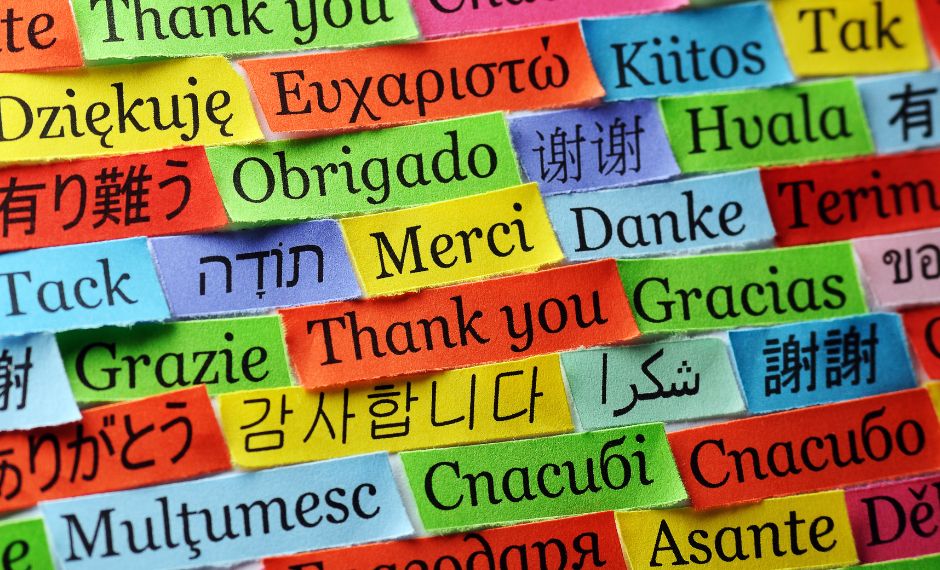What is the Best Way to Scale Your Content for Multilingual Audiences?

Language is to the mind more than light is to the eye. Language is essential in the content and writing field. Cisneros' quote has reminded us that language is a mirror and window. She has wisely said once, “it is very important to be multilingual because it teaches you so much about your own language”.
In today's technical world, businesses and content creators must engage audiences in multiple languages. For any venture, having a website is essential. To stand out among competitors and reach mass audiences, businesses need to initiate certain strategies. A successful website requires cultural adaptation, Search engine optimization, and strategic distribution. This article will help you understand how to effectively scale your content for multilingual audiences.
Why do you need to understand your target audience?
It is very necessary to keep in mind to know your audience very well, and how they communicate. Here is a way to do it effortlessly:
1. Language Preferences:
Different audiences speak different languages even within the same country, and people may prefer different languages corresponding to various regions they belong to. Website and social media analytics often reveal which languages perform best in terms of engagement and rankings. Deeper insights can be derived from these analytics and audits.
2. Cultural Influences:
Cultural dominance runs deep in various nations. Words are so powerful that jokes and references can carry different meanings across cultures, especially online it is more convenient to express views.
For example, a thumbs-up is widely recognized as a positive response on social media platforms. However, in parts of the Middle East, it can be interpreted as offensive due to cultural differences.
To avoid such misunderstandings, it’s essential to research your target audience and consult local experts to review content before publishing.
3. Search Behaviour:
Analytics is a powerful tool for understanding social behaviour and customer preferences. When it comes to reading habits, these can be measured through blog traffic data from Search Console and Analytics. Search patterns vary significantly based on language and location.
In the case of websites and brands, it is vital to use tools like Google Keyword Planner or SEMrush to find the right keywords for each region based on the search volume.
There are free tools like Google Analytics to track audience locations and language preferences. Additionally, you can conduct research, surveys, and social media polls. By understanding these insights, you can create content tailored to your audience's language and culture. Once the basic themes are identified, website content writers can adapt their content accordingly to maximize optimization.
How to choose the right content localization strategy?
Localization will go far beyond translation; it will adapt the content to fit the culture and be based on the linguistic content. It is not just language; every content should carry emotions. There are three ways to localize the content, which include:
1. Full Translation:
Full translation works best for blogs, eBooks, and legal documents. For example, converting an English manual into Malayalam or Hindi ensures accuracy and efficiency, though it may require some cultural adaptations.
2. Creative Adaptation:
This approach works best for advertisements, slogans, social media content, promotions, and brand identity. For example, McDonald's "I'm lovin' it" was adapted to "Me encanta" in Spanish while maintaining the same playful tone. When adapting content, it's crucial to align not just the words but also the emotional resonance to create impact. As previously discussed, these adaptations may vary across languages and can be achieved through a combination of translation and localization.
3. Hybrid Approach:
As the name suggests, the hybrid approach combines translated content with newly created material. Most global brands use this tactic for localization, often testing different versions while creating localized social media posts. This method effectively balances speed and personalization.
These are the many tools for localization. Working with professional translators and localization experts will enhance your content for multilingual audiences. While there is significant AI and machine assistance available, the best results come from balancing both human expertise and technology. Always remember to avoid machine-only translations for nuanced content.
For website content writing services, professionals offer the most reliable solution for creating multilingual content. They efficiently combine humanized elements with recent trends to deliver quality work. Our agency specializes in serving multilingual clients and managing diverse content needs with expertise.
How to scale content for Multilingual Audiences made convenient?
From a business perspective, if a brand, business, or website wants to reach global audiences, it can leverage technology while maintaining the human element. When this approach aligns with emotional connections, it effectively reengages audiences.
Consistency is key when creating multilingual content by maintaining local vocabulary, structure, tone, terminology, and local formats across the respective regions. When promoting tailored content for each region, publish in the local language and collaborate with regional influencers to ensure authentic engagement. By blending technological efficiency with cultural sensitivity, your content can achieve global reach while retaining audience loyalty.
Yourword is a reliable writing agency specializing in SEO copywriting services for all business needs. We craft customized content tailored to each client's specific requirements, with the ability to adapt our writing across multiple languages.
Please contact our team through our website to inquire more!
What We Offer
Web Content Development
SEO Based
Content Writing
Brand Identity Creation
Translation services
Content Marketing
Let’s talk about how
Your Word can help you.
Copyright ©2022 Your Word. All Rights Reserved. Developed by 

